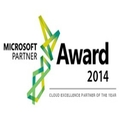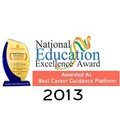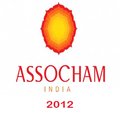OS Syllabus: Key Concepts, Operating System, File System
- s
-
Nov 20
- Share post
The OS Syllabus is designed to offer college students with an knowledge of key standards in running structures. It covers numerous subjects along with reminiscence management, technique scheduling, record structures, and sensible applications. This syllabus serves as the inspiration for mastering how running structures work, specializing in their architecture, functionalities, and the strategies used to control machine sources efficiently.
-
- Key Concepts in OS Syllabus
- Topics Covered in OS Syllabus
- Structure of OS Syllabus
- Operating System Types in OS Syllabus
- Memory Management in OS Syllabus
- Process Scheduling in OS Syllabus
- File System in OS Syllabus
- OS Syllabus for Practical Sessions
- Evaluation Methods in OS Syllabus
- Frequently Asked Questions (FAQs) About OS Syllabus
Key Concepts in OS Syllabus
| Concept | Description |
|---|---|
| Operating System Basics | An OS manages computer hardware and software resources, acting as an intermediary. |
| Process Management | The OS handles the creation, scheduling, synchronization, and termination of processes. |
| Memory Management | The OS allocates and manages memory for processes, ensuring efficient usage. |
| File Management | The OS organizes files in directories, managing their creation, deletion, and access. |
| Device Management | The OS communicates with hardware devices and manages input/output operations. |
| Security and Protection | The OS ensures system security by managing user access and protecting data. |
| Concurrency | The OS enables concurrent execution of processes, maximizing resource utilization. |
| System Calls | System calls are used by programs to request OS services for managing resources. |
| Kernel Architecture | The kernel is the core of the OS, responsible for low-level tasks like scheduling and memory management. |
Topics Covered in OS Syllabus
| Topic | Description |
|---|---|
| Types of Operating Systems | OS types include batch, time-sharing, and real-time systems, each with specific characteristics. |
| System Architecture | Covers different OS structures such as microkernels, monolithic kernels, and hybrid systems. |
| Process Synchronization | Techniques for ensuring safe execution of multiple processes without conflicts. |
| Virtual Memory | Allows programs to use more memory than available physically using techniques like paging. |
| File Systems | The OS manages files through different file systems, ensuring efficient storage and access. |
| Inter-process Communication | Mechanisms like message passing and shared memory for process communication. |
| Input/Output Systems | Covers how the OS handles I/O operations and manages peripheral devices. |
| Scheduling Algorithms | Algorithms like FCFS, Round Robin, and SJF are used to schedule processes for execution. |
| Security Measures | OS security features protect data through authentication, encryption, and firewalls. |
| Multithreading and Multiprocessing | Techniques that allow multiple threads or processes to run simultaneously, improving performance. |
Structure of OS Syllabus
| Topic | Description |
|---|---|
| Introduction to Operating Systems | The syllabus begins with an introduction to operating systems, providing a foundation in the core concepts and their role in managing hardware and software resources. |
| System Architecture | It covers the architecture of operating systems, explaining how the components interact to ensure efficient functioning, such as the kernel, user interface, and memory management units. |
| Process Management | A significant portion is dedicated to understanding process management, including process scheduling, process control blocks, and inter-process communication. |
| Memory Management | This section explains memory allocation, paging, segmentation, and virtual memory techniques that allow efficient usage of system memory resources. |
| File Systems | Students learn about the structure of file systems, how files are stored, retrieved, and managed. Topics like file allocation methods and directory structures are discussed in detail. |
| Device Management | The syllabus addresses how the operating system handles input/output devices. It explains device drivers, device controllers, and the role of buffers in I/O operations. |
| Security and Protection | Security concepts like user authentication, access control, and system integrity are included to help students understand how operating systems ensure data security. |
| Networking | The structure includes an overview of networking features in operating systems. Topics like network protocols, communication between devices, and resource sharing are explored. |
| Case Studies | Real-world case studies of popular operating systems are included to demonstrate the application of theoretical concepts in practical scenarios. |
| Practical Sessions | The syllabus also incorporates hands-on learning, where students implement the concepts in a controlled environment using virtual machines or lab systems to apply theoretical knowledge. |
Operating System Types in OS Syllabus
| Type | Description |
|---|---|
| Batch Operating System | Batch operating systems process jobs in groups. Users submit their jobs in batches, and the system handles execution without direct user interaction during processing. |
| Time-Sharing Systems | Time-sharing operating systems allow multiple users to access the system simultaneously. Each user gets a time slice, providing the illusion of exclusive access to the system. |
| Real-Time Operating Systems | Real-time systems are designed to process data within strict time constraints. They are used in critical applications such as medical devices, aerospace, and industrial control systems. |
| Distributed Operating Systems | These systems manage a group of separate computers that work together as a single unit. They offer resource sharing and high availability, which are crucial for large-scale computing environments. |
| Network Operating Systems | A network OS allows multiple computers to connect and communicate over a network. It enables resource sharing, remote file access, and network security protocols between different devices. |
| Embedded Operating Systems | Embedded operating systems are designed for devices with specific functions. These include smartphones, household appliances, and automotive systems, where resources are limited and highly specialization. |
| Multiprocessor Systems | Multiprocessor systems utilize multiple processors for parallel execution. They improve performance by dividing tasks and sharing processing power across several CPUs. |
| Single-User, Single-Task Operating Systems | This type of system is designed to support one user and one task at a time. It is simpler and often found in early operating systems or embedded devices. |
| Multi-User, Multi-Tasking Systems | These operating systems allow multiple users to run several applications simultaneously. They are commonly found in mainframes, servers, and modern personal computers. |
| Hybrid Operating Systems | Hybrid systems combine the features of different operating systems to provide flexibility. For example, modern operating systems often mix real-time capabilities with multi-tasking features. |
Memory Management in OS Syllabus
- Definition and Importance
Memory control guarantees that laptop structures use reminiscence assets efficiently. It is essential for top-quality device overall performance, allocating reminiscence to approaches and reclaiming it after use. - Memory Types
There are principal forms of reminiscence: primary (RAM) and secondary (tough drives, SSDs). Efficient control among those kinds is vital for device pace and reliability. - Memory Allocation Techniques
This consists of techniques like contiguous allocation, paging, and segmentation. Each technique handles reminiscence distribution differently, balancing among pace and complexity. - Paging
Paging divides reminiscence into fixed-length blocks known as pages. It simplifies allocation and makes reminiscence utilization extra green through stopping fragmentation. This method permits for higher manner isolation. - Segmentation
Segmentation splits reminiscence into variable-sized segments primarily based totally on logical divisions. Unlike paging, it presents a extra bendy structure, accommodating complicated packages that want unique reminiscence layouts. - Virtual Memory
Virtual reminiscence permits the device to simulate extra reminiscence than bodily to be had through the use of disk garage. This complements device capability, permitting approaches to run as aleven though extra reminiscence exists than what’s genuinely installed. - Swapping
Swapping entails shifting facts among RAM and disk garage to unfastened up reminiscence. While it improves multitasking, immoderate swapping can result in overall performance degradation. - Memory Protection
Memory safety guarantees that approaches do now no longer intervene with every other`s reminiscence. It facilitates in keeping device balance and security, stopping unauthorized get right of entry to to reminiscence areas. - Garbage Collection
Garbage series refers to robotically reclaiming reminiscence this is not in use. This manner facilitates in heading off reminiscence leaks, that could gradual down or crash the device.
Process Scheduling in OS Syllabus
- Process Scheduling Overview
Process scheduling refers back to the manner an working gadget makes a decision which manner receives to apply the CPU at any given time. It targets to maximise CPU usage and make certain equity. - CPU Scheduling Algorithms
Common algorithms encompass First-Come, First-Served (FCFS), Shortest Job Next (SJN), Round Robin (RR), and Priority Scheduling. Each set of rules has its blessings and is acceptable for exclusive forms of workloads. - First-Come, First-Served (FCFS)
In FCFS, approaches are done withinside the order they arrive. While easy to implement, it is able to cause inefficiencies, specifically with longer approaches that postpone others. - Shortest Job Next (SJN)
SJN prioritizes the manner with the shortest execution time. This minimizes wait instances and complements performance however calls for information of the manner length beforehand of time. - Round Robin (RR)
Round Robin divides CPU time into identical slices, permitting every manner to run for a hard and fast period. This scheduling approach guarantees equity and is generally utilized in time-sharing structures. - Priority Scheduling
Priority scheduling assigns a concern stage to every manner. The manner with the best precedence runs first. This approach may be adjusted dynamically or statically, primarily based totally on manner importance. - Preemptive vs Non-Preemptive Scheduling
In preemptive scheduling, a jogging manner may be interrupted to permit a higher-precedence manner to execute. Non-preemptive scheduling runs a manner to final touch earlier than switching to another. - Multilevel Queue Scheduling
In this approach, approaches are divided into exclusive queues primarily based totally on their precedence or characteristics. Each queue might also additionally use a exclusive scheduling set of rules, which include Round Robin for interactive approaches and FCFS for batch approaches.
File System in OS Syllabus
- Definition and Purpose: A record device is a technique utilized by working structures to keep, arrange, and retrieve information on garage gadgets like tough drives and SSDs.
- Components of a File System: Key additives encompass documents, directories, and record metadata, which keep facts approximately record attributes like size, advent date, and get entry to permissions.
- Types of File Systems: Common record structures encompass FAT, NTFS, ext3, and ext4, every supplying exclusive stages of performance and functions relying at the working device.
- File Operations: The record device helps operations inclusive of creating, reading, writing, and deleting documents. These movements are important for interacting with saved information.
- File Access Methods: There are foremost kinds of record get entry to: sequential get entry to and direct get entry to, figuring out how information is study or written from a record.
- Storage Allocation: File structures manipulate how area is allotted on garage gadgets. This consists of coping with unfastened area, fragmentation, and making sure green information garage.
- File Security: A record device is liable for coping with record permissions to make sure information is secure. Only legal customers or methods can get entry to or regulate touchy documents.
- Directory Structures: File structures arrange documents into directories and subdirectories, taking into consideration a hierarchical shape that facilitates customers manipulate and discover documents easily.
- Backup and Recovery: File structures regularly encompass functions for backup and recovery, shielding information from loss because of hardware failure, corruption, or unintentional deletion.
- File System Performance: The overall performance of a record device affects the rate of information retrieval and garage. Optimizing record structures guarantees that device assets are used efficiently.
OS Syllabus for Practical Sessions
- Importance of Hands-On Experience: Practical classes offer college students with the possibility to use theoretical knowledge, reinforcing key standards found out in class.
- Laboratory Work in Operating Systems: Practical labs cognizance on numerous working device duties, together with technique control, reminiscence control, and document device operations.
- Operating System Installation and Configuration: One key realistic consultation entails putting in and configuring working structures. Students discover ways to control device setups and troubleshoot not unusualplace issues.
- Process Management Tasks: Students paintings on technique creation, termination, and scheduling duties in realistic classes. They advantage firsthand enjoy in technique manage and aid allocation.
- Memory Management Simulations: Labs regularly contain simulations wherein college students control reminiscence allocation, paging, and segmentation to higher recognize reminiscence control techniques.
- Understanding File Systems: Practical classes permit college students to create, modify, and delete files, control directories, and test with document permissions and get right of entry to methods.
- System Calls and APIs: Students exercise the usage of device calls and APIs to engage with the working device, gaining an know-how of ways applications speak with hardware.
- Networking and Security: Some realistic classes cowl networking standards, such as socket programming and community security, that are crucial for know-how present day working structures.
- Virtualization and Resource Management: Labs can also additionally encompass sports on digital machines and aid control, allowing college students to find out how working structures control a couple of customers and duties.
- Performance Analysis: Students additionally take part in classes that contain tracking and studying device performance, mastering the way to become aware of and optimize device bottlenecks.
This realistic technique allows college students higher recognize the theoretical standards and complements their problem-fixing skills, getting ready them for real-international situations withinside the subject of working structures.
Evaluation Methods in OS Syllabus
- Theory Exams: The number one assessment approach withinside the OS Syllabus is thru idea checks. These checks examine college students` know-how of middle running device concepts, which include reminiscence control, procedure scheduling, and document structures.
- Practical Exams: Practical checks are any other key factor of the OS Syllabus. Students should show their capacity to use theoretical information through fixing real-global issues associated with running structures in a hands-on environment.
- Assignments and Projects: Assignments and initiatives play a enormous position withinside the OS Syllabus assessment. These responsibilities permit college students to discover running structures in-intensity and exhibit their problem-fixing competencies thru sensible assignments.
- Class Participation: Active magnificence participation is regularly evaluated withinside the OS Syllabus. Students are anticipated to have interaction in discussions, ask questions, and make contributions thoughts to reveal their know-how of the difficulty matter.
- Lab Sessions: Lab classes are an critical a part of the OS Syllabus assessment. Students benefit sensible publicity to diverse running structures, running on responsibilities like procedure control and document handling, which can be vital for studying the difficulty.
- Online Quizzes: Some establishments comprise on line quizzes as a part of its assessment. These quizzes take a look at college students’ information on unique subjects like procedure synchronization, digital reminiscence, and security.
- Mid-time period Examinations: Mid-time period checks are performed to evaluate college students’ draw close of the cloth blanketed withinside the first 1/2 of of it. These checks assist discover regions in which college students want development earlier than the very last assessment.
- Research Papers: Some guides encompass studies papers as an assessment approach withinside it. Students are tasked with gaining knowledge of unique subjects inside running structures and imparting their findings in written reports.
Frequently Asked Questions (FAQs) About OS Syllabus
1. What is the OS Syllabus?
The OS Syllabus covers key subjects associated with running systems, which include reminiscence management, system scheduling, report systems, and sensible applications.
2. What are the principle subjects withinside the OS Syllabus?
Major subjects consist of OS types, system management, reminiscence management, report systems, security, and gadget calls.
3. How is the OS Syllabus evaluated?
Evaluation consists of principle exams, sensible exams, assignments, projects, and lab periods.
4. Is sensible expertise covered withinside the OS Syllabus?
Yes, sensible periods are an imperative a part of the OS Syllabus, permitting hands-on enjoy with running systems.
5. Who have to observe the OS Syllabus?
Students pursuing pc technology or associated fields commonly observe the OS Syllabus to apprehend running gadget ideas and functionalities.
MBA Exams
Top Searches
Jee Mains
Jee Advance
STUDENTS
- For 9th class
- Skill Based Career Test |
- Services |
- Basic Plan |
- Advance Plan |
- Video Counselling Plan |
- Mentorship Plan
- For 10th class
- Stream Selector Test |
- Ideal Career Test |
- Services |
- Basic Plan |
- Advance Plan |
- Video Counselling Plan |
- Mentorship Plan
- For 11th class
- Ideal Career Test |
- Engineering Branch Selector |
- Humanities Career Selector |
- Commerce Career Selector |
- Services |
- Basic Plan |
- Advance Plan |
- Video Counselling Plan|
- Mentorship Plan
- For 12th class
- Ideal Career Test |
- Engineering Branch Selector |
- Humanities Career Selector |
- Commerce Career Selector |
- Services |
- Basic Plan |
- Advance Plan |
- Video Counselling Plan |
- Mentorship Plan
- For B.Com
- Commerce Career Selector |
- Ideal Career Test |
- Services |
- Basic Plan |
- Advance Plan |
- Video Counselling Plan |
- Mentorship Plan
- For B.Sc
- Ideal Career Test |
- Professional Skill Index Test |
- Services |
- Basic Plan |
- Advance Plan |
- Video Counselling Plan |
- Mentorship Plan
- For B.Tech
- Ideal Career Test |
- Professional Skill Index Test |
- Services |
- Basic Plan |
- Advance Plan |
- Video Counselling Plan |
- Mentorship Plan
- For B.A
- Ideal Career Test |
- Humanities Career Selector |
- Professional Skill Index Test |
- Services |
- Basic Plan |
- Advance Plan |
- Video Counselling Plan |
- Mentorship Plan
- For MBA
- Ideal Career Test |
- Professional Skill Index Test |
- Services |
- Basic Plan |
- Advance Plan |
- Video Counselling Plan |
- Mentorship Plan
- For Masters
- Professional Skill Index Test |
- Services |
- Basic Plan |
- Advance Plan |
- Video Counselling Plan |
- Mentorship Plan
STUDY ABROAD






Copyright © CareerGuide.com
Build Version:- 1.0.0.0
- X
- Telegram
- Tumblr
- VKontakte
- Copy link
- Share via...